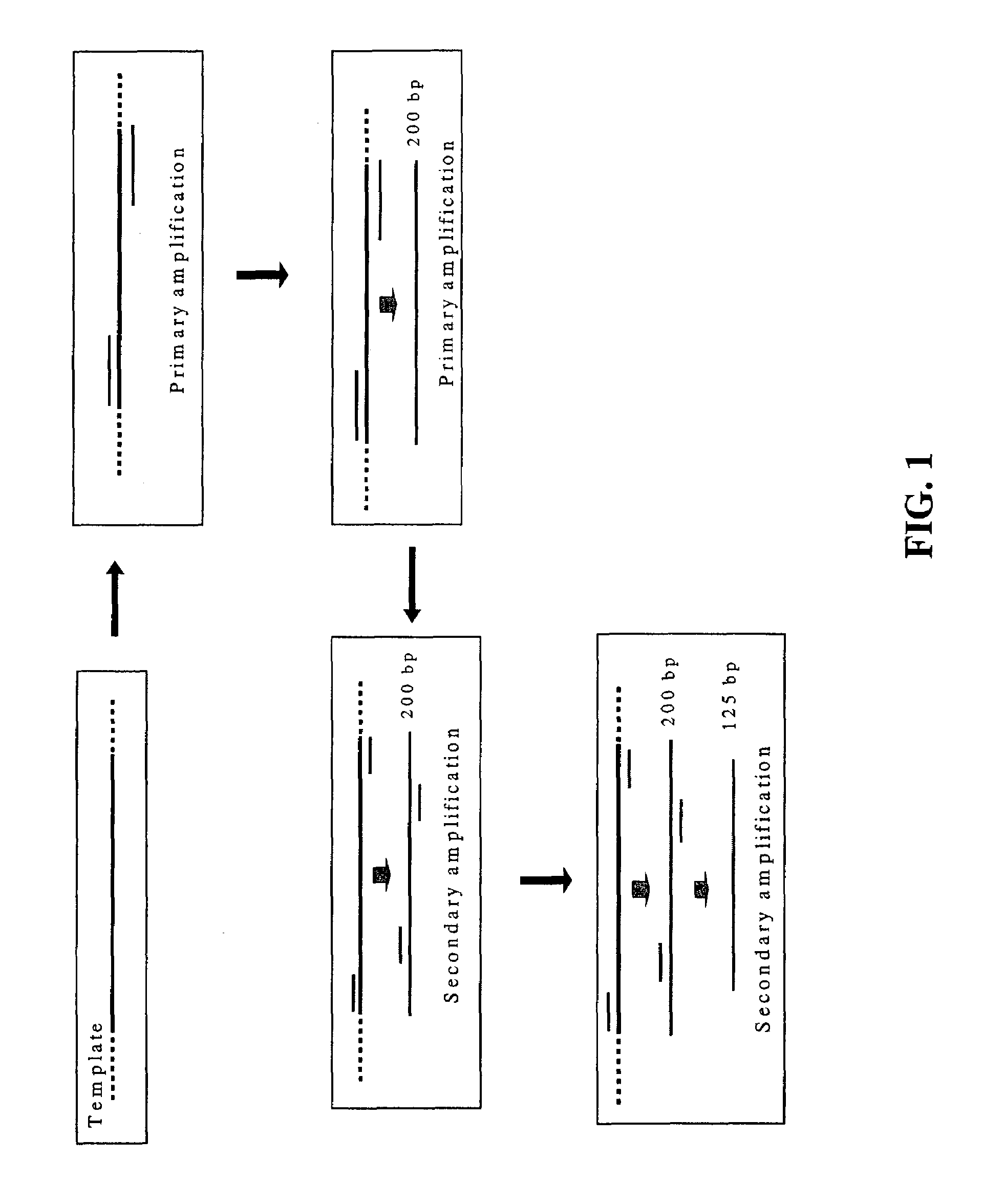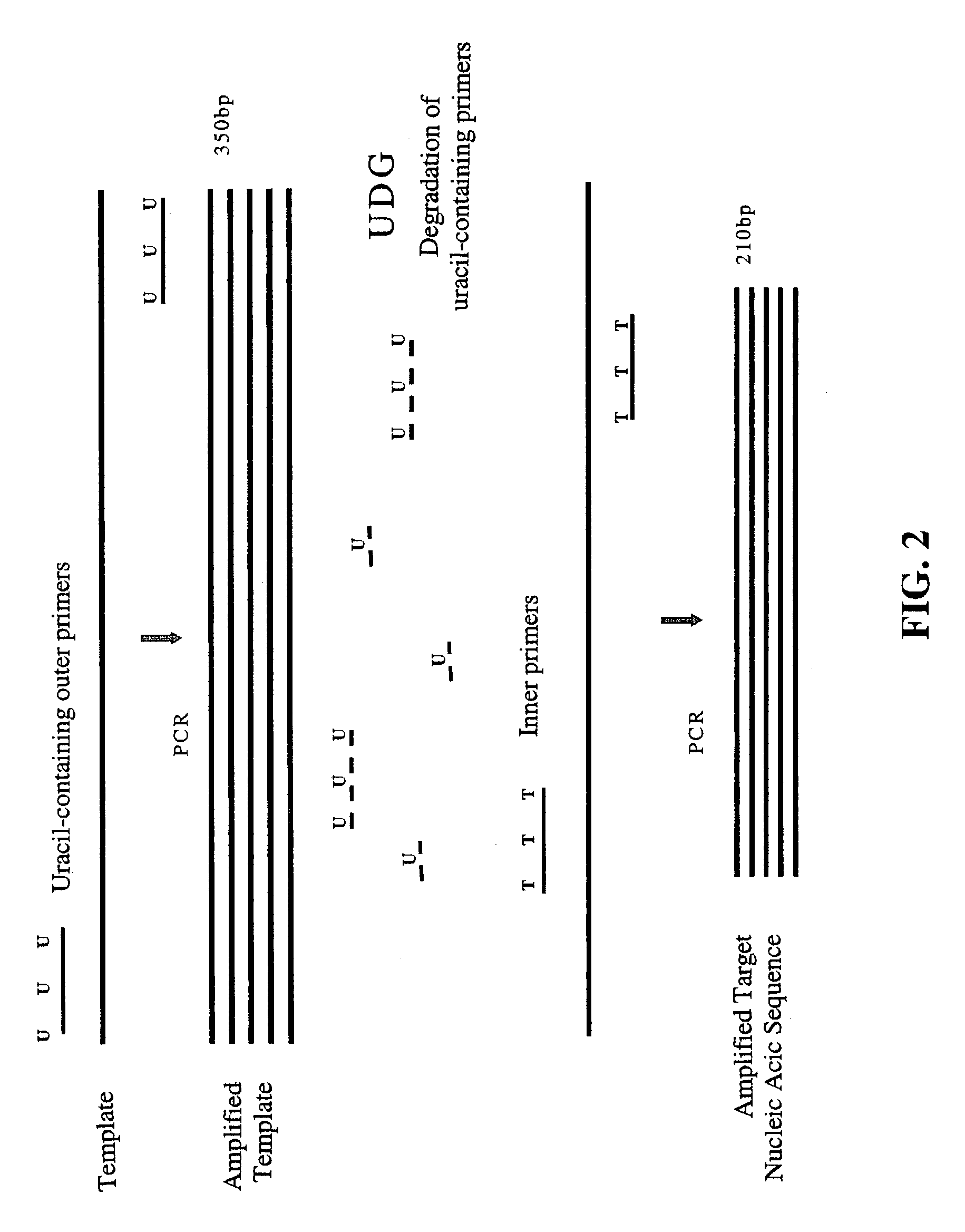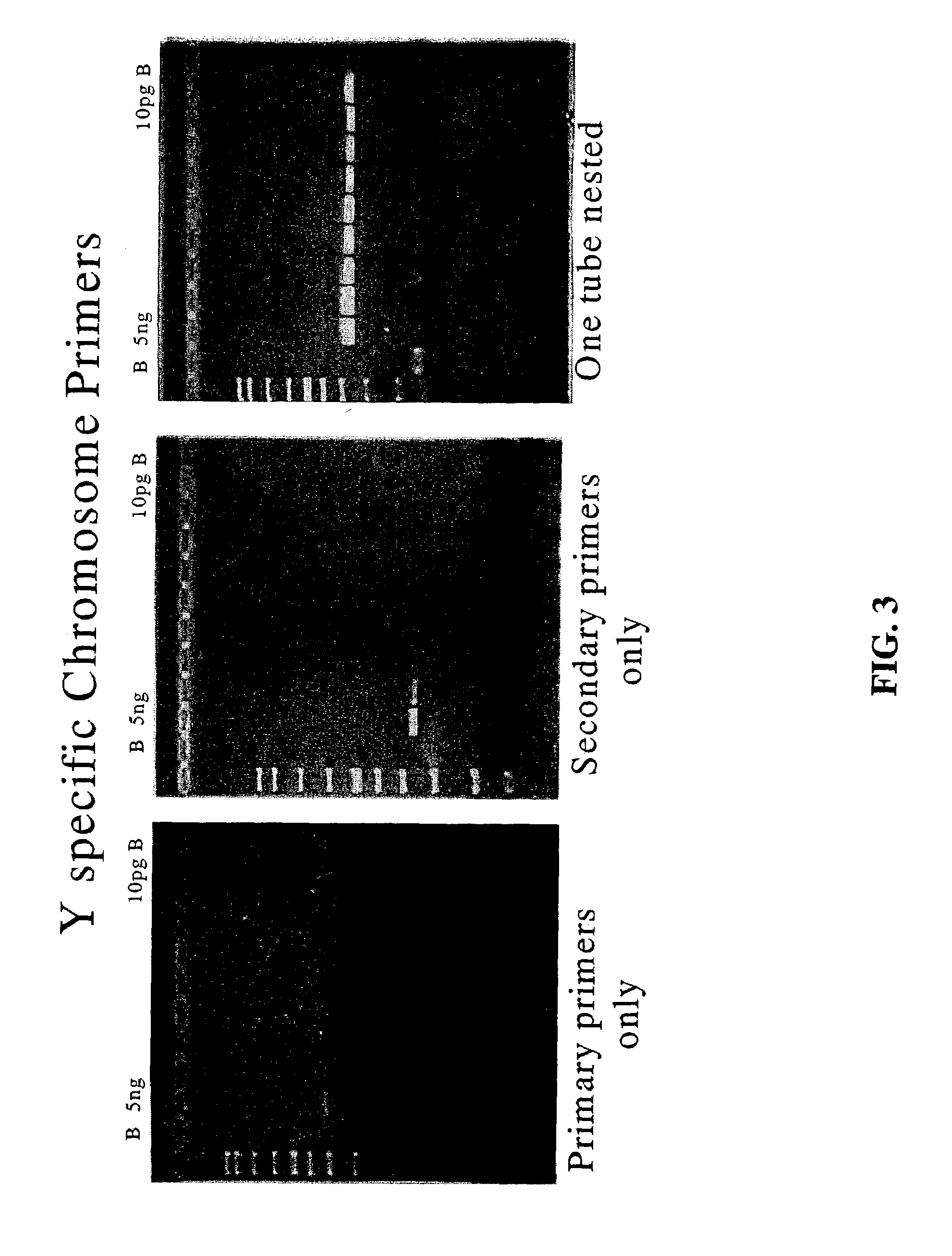Nested PCR employing degradable primers
a primer and pcr technology, applied in the field of molecular biology and molecular diagnostics, can solve the problems of large amplification of the original specific sequence number, huge amplifaction of the non-desired sequence, and particularly severe contamination problems in laboratories
- Summary
- Abstract
- Description
- Claims
- Application Information
AI Technical Summary
Benefits of technology
Problems solved by technology
Method used
Image
Examples
example 1
Comparison of Nested PCR to PCR with Y-Chromosome Specific Primers Pairs Used Individually.
[0149]With reference to FIG. 3, PCR reactions using individual Y-chromosome specific outer primer pair SEQ ID NO:1 and SEQ ID NO:2 (left panel) or inner primer pair SEQ ID NO:3 and SEQ ID NO:4 (center panel) are compared to nested PCR using both primer pairs together (right panel). The results illustrate the superiority of one tube nested PCR of the present invention over that of the primers used individually.
[0150]Each reaction contained varying amounts of template DNA and the results are shown in FIG. 3 where lane M contains a molecular weight ladder, lane 1 shows the results obtained with 5 ng of template DNA, lane 2 shows the results obtained with 1 ng of template DNA, lane 3 shows the results obtained with 0.5 ng of template DNA, lane 4 shows the results obtained with 0.25 ng of template DNA, lane 5 shows the results obtained with 0.1 ng of template DNA, lane 6 shows the results obtained ...
example 2
Comparison of Nested PCR to PCR with X-Chromosome Specific Primers Pairs Used Individually.
[0152]With reference to FIG. 4, PCR reactions using individual X-chromosome specific outer primer pair SEQ ID NO:9 and SEQ ID NO: 0 (left panel) or inner primer pair SEQ ID NO:11 and SEQ ID NO:12 (center panel) are compared to nested PCR using both primer pairs together (right panel). The results illustrate the superiority of one tube nested PCR of the present invention over that of the primers used individually.
[0153]Each reaction contained varying amounts of DNA and the results are shown in FIG. 4 where, for each reaction, lane M contains a molecular weight ladder, lane 1 shows the results obtained with 5 ng of template DNA, lane 2 shows the results obtained with 1 ng of template DNA, lane 3 shows the results obtained with 0.5 ng of template DNA, lane 4 the shows results obtained with 0.25 ng of template DNA, lane 5 shows the results obtained with 0.1 ng of template DNA, lane 6 shows the res...
example 3
Comparison of Classical Nested PCR to One Tube Nested PCR Using X-Chromosome Specific Primers.
[0155]With reference to FIG. 5, classical nested PCR is compared to the one tube nested PCR of the present invention using X-chromosome specific primers. The results illustrate the superiority of one tube nested PCR of the present invention over that of classical nested PCR.
[0156]X-chromosome specific outer primer pair SEQ ID NO:9 and SEQ ID NO:10 and inner primer pair SEQ ID NO:11 and SEQ ID NO:12 were used for both classical and one tube nested PCR reactions. The outer primer pair reaction of the classical PCR reaction contained varying amounts of template DNA. After amplification with the outer primers, either a 1 μl (left panel) or a 10 μl (center panel) aliquot of the outer primer PCR reaction was used in the amplification reaction using the inner primers in the classical nested PCR reactions. The one tube nested PCR reaction contained varying amounts of template DNA as well as 0.5 uni...
PUM
| Property | Measurement | Unit |
|---|---|---|
| Length | aaaaa | aaaaa |
| Degradation properties | aaaaa | aaaaa |
Abstract
Description
Claims
Application Information
 Login to View More
Login to View More - R&D
- Intellectual Property
- Life Sciences
- Materials
- Tech Scout
- Unparalleled Data Quality
- Higher Quality Content
- 60% Fewer Hallucinations
Browse by: Latest US Patents, China's latest patents, Technical Efficacy Thesaurus, Application Domain, Technology Topic, Popular Technical Reports.
© 2025 PatSnap. All rights reserved.Legal|Privacy policy|Modern Slavery Act Transparency Statement|Sitemap|About US| Contact US: help@patsnap.com



